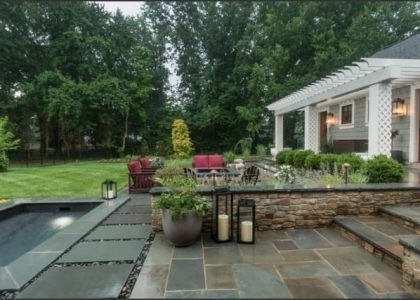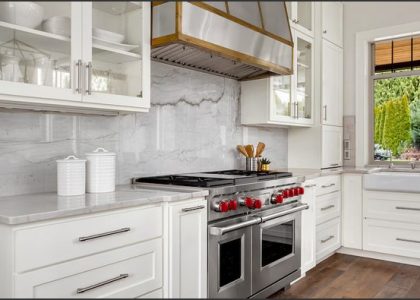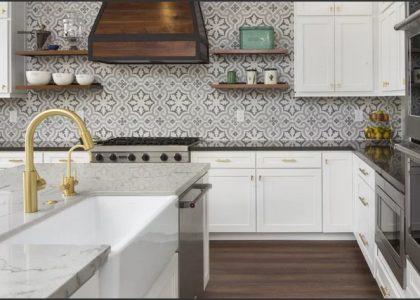Deck Dynamics: Understanding the Cost of Building a Deck for Your Home is a comprehensive guide to help homeowners understand the cost of building a deck for their home. This guide provides an overview of the different materials, labor, and other costs associated with building a deck, as well as tips and advice on how to save money and get the most out of your deck project. With this guide, homeowners can make informed decisions about their deck project and ensure that they get the best value for their money.
Exploring the Different Factors That Impact the Cost of Building a Deck for Your Home
Building a deck for your home can be a great way to add value and enjoyment to your property. However, it is important to understand the different factors that can impact the cost of building a deck. Knowing these factors can help you make an informed decision about the best way to build a deck that meets your needs and budget.
The first factor to consider is the size of the deck. The larger the deck, the more materials and labor will be required, and the higher the cost will be. Additionally, the shape of the deck can also affect the cost. A deck with multiple levels or curves will require more materials and labor than a simple rectangular deck.
The type of materials used to build the deck is another factor that can impact the cost. Pressure-treated wood is the most common and least expensive material, but it requires regular maintenance to keep it looking good. Composite materials are more expensive but require less maintenance and are more durable.
The complexity of the deck design is another factor that can affect the cost. If you want to add features such as built-in benches, planters, or railings, the cost will be higher. Additionally, if you want to add lighting or other electrical features, the cost will also increase.
Finally, the cost of labor can also have a significant impact on the overall cost of building a deck. If you choose to hire a professional contractor, the cost will be higher than if you choose to do the work yourself. Additionally, the cost of labor can vary depending on the region and the complexity of the project.
By understanding the different factors that can impact the cost of building a deck, you can make an informed decision about the best way to build a deck that meets your needs and budget.
Analyzing the Deck Dynamics of Different Materials to Determine the Most Cost-Effective Option for Your Home
When it comes to choosing the right material for your deck, there are a variety of factors to consider. From cost to durability, the material you choose can have a significant impact on the overall look and feel of your outdoor space. To help you make the most cost-effective decision for your home, this article will analyze the deck dynamics of different materials to determine the most cost-effective option.
Wood is one of the most popular materials for decks, and for good reason. It is relatively inexpensive, easy to install, and can be stained or painted to match the look of your home. However, wood is not the most durable material and requires regular maintenance to keep it looking its best. Additionally, wood is susceptible to rot, warping, and insect damage, which can be costly to repair.
Composite decking is a popular alternative to wood. It is made from a combination of wood fibers and plastic, making it more durable and resistant to rot and insect damage. Composite decking is also low-maintenance and can be installed quickly and easily. However, composite decking is more expensive than wood and can be difficult to repair if it becomes damaged.
Vinyl decking is another popular option. It is made from a combination of PVC and other synthetic materials, making it extremely durable and resistant to rot and insect damage. Vinyl decking is also low-maintenance and can be installed quickly and easily. However, vinyl decking is more expensive than wood and composite decking and can be difficult to repair if it becomes damaged.
Finally, aluminum decking is a great option for those looking for a durable and low-maintenance material. Aluminum is resistant to rot and insect damage and can be installed quickly and easily. However, aluminum decking is more expensive than wood and composite decking and can be difficult to repair if it becomes damaged.
When it comes to choosing the most cost-effective material for your deck, it is important to consider the cost, durability, and maintenance requirements of each material. Wood is the most affordable option, but it requires regular maintenance and can be susceptible to rot and insect damage. Composite decking is more durable and low-maintenance, but it is more expensive than wood. Vinyl and aluminum decking are both extremely durable and low-maintenance, but they are also more expensive than wood and composite decking. Ultimately, the best material for your deck will depend on your budget and the look and feel you are trying to achieve.
Conclusion
In conclusion, Deck Dynamics: Understanding the Cost of Building a Deck for Your Home is an invaluable resource for anyone considering building a deck for their home. It provides a comprehensive overview of the costs associated with building a deck, from materials and labor to permits and inspections. It also offers helpful tips and advice on how to save money and get the most out of your deck project. With this information, homeowners can make informed decisions about their deck project and ensure that they get the best value for their money.




